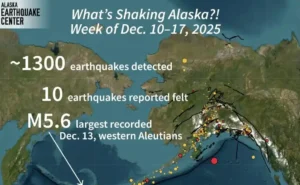Researchers have identified natural hydrogen in Earth’s crust as a vast untapped energy source that could last millennia. A team from the University of Oxford Durham University and the University of Toronto has mapped out the conditions for locating natural hydrogen.
Their study, published in Nature Reviews Earth & Environment, outlines how specific rock formations and geological processes create and trap hydrogen deep underground. Hydrogen plays a vital role in making fertilizers and chemicals and is increasingly essential to future carbon-free energy systems.
But today’s hydrogen production relies heavily on hydrocarbons, which release harmful carbon dioxide emissions into the atmosphere. The new study provides a detailed strategy to find clean hydrogen formed naturally over millions of years beneath the Earth’s surface.
Scientists believe this discovery offers a low-emission alternative to hydrogen made using fossil fuels or expensive electrolysis. The research outlines how hydrogen forms when certain rocks react with water over geological time.
These processes create reservoirs in the continental crust that hold enough gas to power humanity for approximately 170,000 years. Lead author Professor Chris Ballentine compared hydrogen exploration to baking, saying one must get the ingredients’ temperature and timing exactly right.
Otherwise, the system won’t yield commercially useful amounts of hydrogen. Professor Jon Gluyas emphasized that geologists have applied similar methods successfully in helium exploration and can now use this playbook for hydrogen.
Their goal is to guide industries in locating valuable hydrogen systems in viable rock layers worldwide. Professor Barbara Sherwood Lollar cautioned that underground microbes consume hydrogen, so avoiding microbial-rich zones is critical to preserving viable deposits.
The team’s work has already inspired the launch of Snowfox Discovery Ltd, a new company focused on exploring Earth’s crust. With rising hydrogen demand and global carbon targets, this breakthrough may help unlock clean energy solutions hiding beneath our feet.












